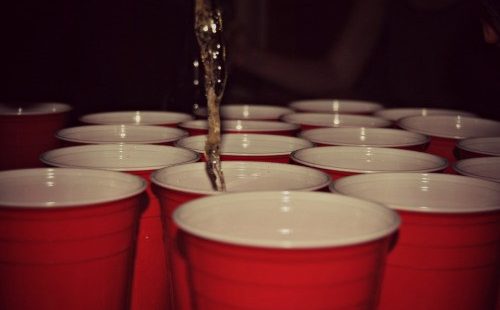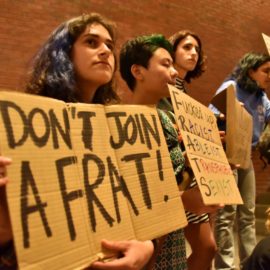Disclosure: I may earn affiliate revenue or commissions if you purchase products from links on my website. The prospect of compensation does not influence what I write about or how my posts are structured. The vast majority of articles on my website do not contain any affiliate links.
College administrators live and die by Princeton Review and US News rankings. What used to be just an overall leaderboard is now seen as the definition of value and success in diverse areas. There are so many categories. Not only is the accuracy of the standings highly trusted, but people pay money to find out things like which school is #1 in fire safety.
I devoured the Princeton Review book back when I was in high school. These rankings still genuinely interest me. But the story is always the same. People bemoan slippages in the overall standing, are quick to share average career earnings on Facebook (regardless of actual correlation with individual earnings), and are quite torn when it comes to the party school rankings.
Sure, there’s an official survey, but when it comes to the party school rankings I have to assume that some dude named Frederick from the Princeton Review shows up at a college bar or house party and takes some metrics of his own. How long does the party last for? How efficiently are drinks being served? What is the ratio of students:students that have a class starting at 8 the next day?
A kid can dream. Like the rest of the rankings–however they’re compiled–people place weight on what the Princeton Review says. When college administrators see it, though, they’re always at a loss for words. My alma mater, Lehigh University, has always mixed it up among large state schools in the rankings. The administrators decry it but never release an official statement because that would draw even more attention to the amount of partying going on on campus.

But what if that’s a good thing?
Look here–I went to a small private school with about 5,000 undergraduates. Penn State, as in the Pennsylvania State University system, has nearly 50,000 undergraduates with 16,000 new ones every year. Roughly 70,000 students apply every year, and 35,000 are admitted. It’s a good school. It’s a humungous school. And there is pretty much nothing Penn State–or the Princeton Review–could do that would tip the scales in any direction. Crazy parties? Cool, you have 70,500 applications next year. Higher rank? Good for you, you have 71,000 applications next year. Lower rank? Eh, you have 71,000 applications because some people figure it’s easier to get into. It’s hard to move the needle because the school is widely known and widely desired.
So, then, what is it that makes my little college such a special snowflake? In the Patriot League, you have four small schools that all share four traits: high selectivity, apathy when it comes to sports, raucous parties, and relative obscurity. Here in the midwest, most people have never heard of Lehigh, Lafayette, Colgate, or Bucknell, but that’s changing. I think.
When I applied to Lehigh University, the school accepted roughly 33% of students. This was the best I could do. You should have seen my face when I got in. This year, Lehigh accepted 19% of students. This is close to Carnegie Mellon‘s acceptance rate. What the hell happened?
More people applied. With a larger candidate pool, the university admissions office is able to be more selective. So, everyone wins, right? Current students feel great. Alumni feel great. The class of 2022 feels great. For the thousands of additional highschoolers rejected, though, it must hurt. But, maybe most of them didn’t really care in the first place.
If the college-admissions cheating scandal of 2019 has taught us anything, it’s that some kids really do just attend school to party. Further, there is a strong correlation between those who go to school to party and those whose parents have the means to pay for their partying. What I believe is happening at Lehigh is going to be viewed as blasphemous, but I don’t think that the school is “becoming more selective” simply because more families view it as a good school. I don’t think we’ve genuinely earned a 14% reduction (well, reduction in percentage points) in students admitted. Things aren’t moving that fast. Nothing all that exciting is happening.
What moves faster than word that a school is good is word that a school has fun parties. Over the last few years, Lehigh has shown up in more party rankings lists than I care to name. Over the same arbitrary period of time, it’s actually dropped in the US News overall rankings. What’s the difference between #47 in the country and #53 in the country when you’re #1 in ‘lots of beer’ (yes this is a real category and, yes, Lehigh was #1). The result is that well-off highschoolers have their parents pay the application fee. Why not give it a shot? When word ripples through wealthy enclaves in Southern California, that actually moves the needle. The same phenomenon would have no discernable effect on the admissions statistics of Penn State.
In conclusion, party rankings can help small schools raise in rankings. It’s one thing to bolster a work-hard-play-hard reputation (which I’d imagine a few schools still embrace), but it’s another thing entirely when you’re able to do that while simultaneously attracting more privileged, less-qualified students who get rejected and in turn make the school seem drastically more selective. It’s a conspiracy theory, for sure, but I firmly believe that Lehigh is at the pinnacle of this trend.




